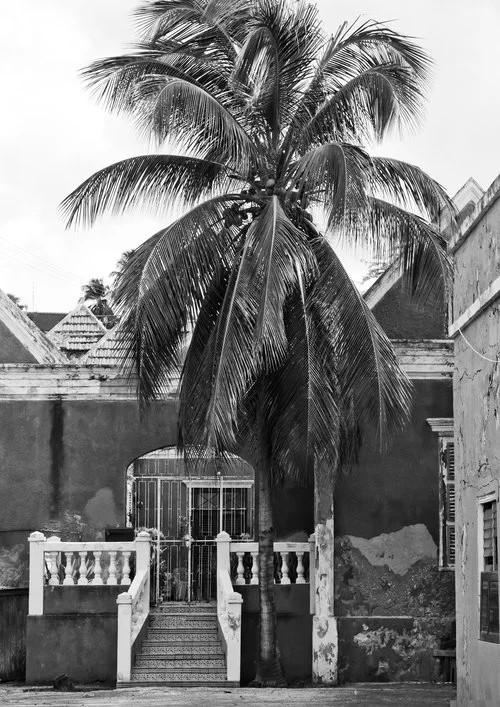MEMORY
(this set of photographs is by myself from around 2008, but it shows old buildings, as those in my childhood. The text here is part of the foreword to my book, House without Doors, that was published in Hebrew translation in 2013 as בית ללא דלתול. These photographs of old houses in Curacao serve as the chapter headings.)
***
Memory is often constructed - and especially the memory of child. It is mixed with the myths and fictions she is told, making it hard to distinguish the lived experience from the narrated one, or from the one that has been captured in photographs and film. With a father who was a devoted amateur moviemaker, and a grandfather and mother who were also gifted photographers, I grew up with lively images of myself that added new layers to the palimpsest of my memory as a young child.
Nevertheless, memories are at times brought back to their full, lived intensity. Often it is a chance experience of the senses that unlocks them - a familiar taste, smell, or touch. It was the sensing of my body’s movements in architectural space that acted as a Proustian petite madeleine, allowing me to transcend conscious recollection.
As a student of architecture in Jerusalem, at Bezalel, in the mid-nineteen-eighties, I was asked to draw the house of my earliest childhood. I discovered, to my astonishment, that I could recall every detail of the old house - the exact placement of each window, the relative size of the rooms and corridors, the hidden corners and the narrow passages in the yard, where we would climb as children between the high, plastered walls. I drew sketches of myself standing on the broad windowsill in my bedroom; climbing the coconut tree like a monkey; cuddling up in the little hidden corner behind the staircase.
While drawing these spaces, I was suddenly thrown back with a tremendous force into a world that had remained shrouded for some twenty-five years. I was again that skinny little girl with black hair and very dark brown eyes, finding my way through the old colonial house. I could sense the volume of the rooms, I could follow the shape of the walls, turning around their corners, entering narrow passageways. Again, I touched the smooth white paint of the windowsills and felt the roughness of the wooden floors that gave me splinters in my feet.
I came to the study of architecture as a sociologist concerned with the interrelation between social behavior and physical space. I never became a practicing architect. Instead, the study of architecture, at Bezalel, an art academy, served as a bridge between sociology and the visual arts for me, while my background in both sociology and architecture led to my writing of "House without Doors" * which is in fact an architectural memoir/ fantasy, of the social interactions and normative behavior in each room of the old house, told from the perspective of the twelve year old girl who is growing up there.
****




